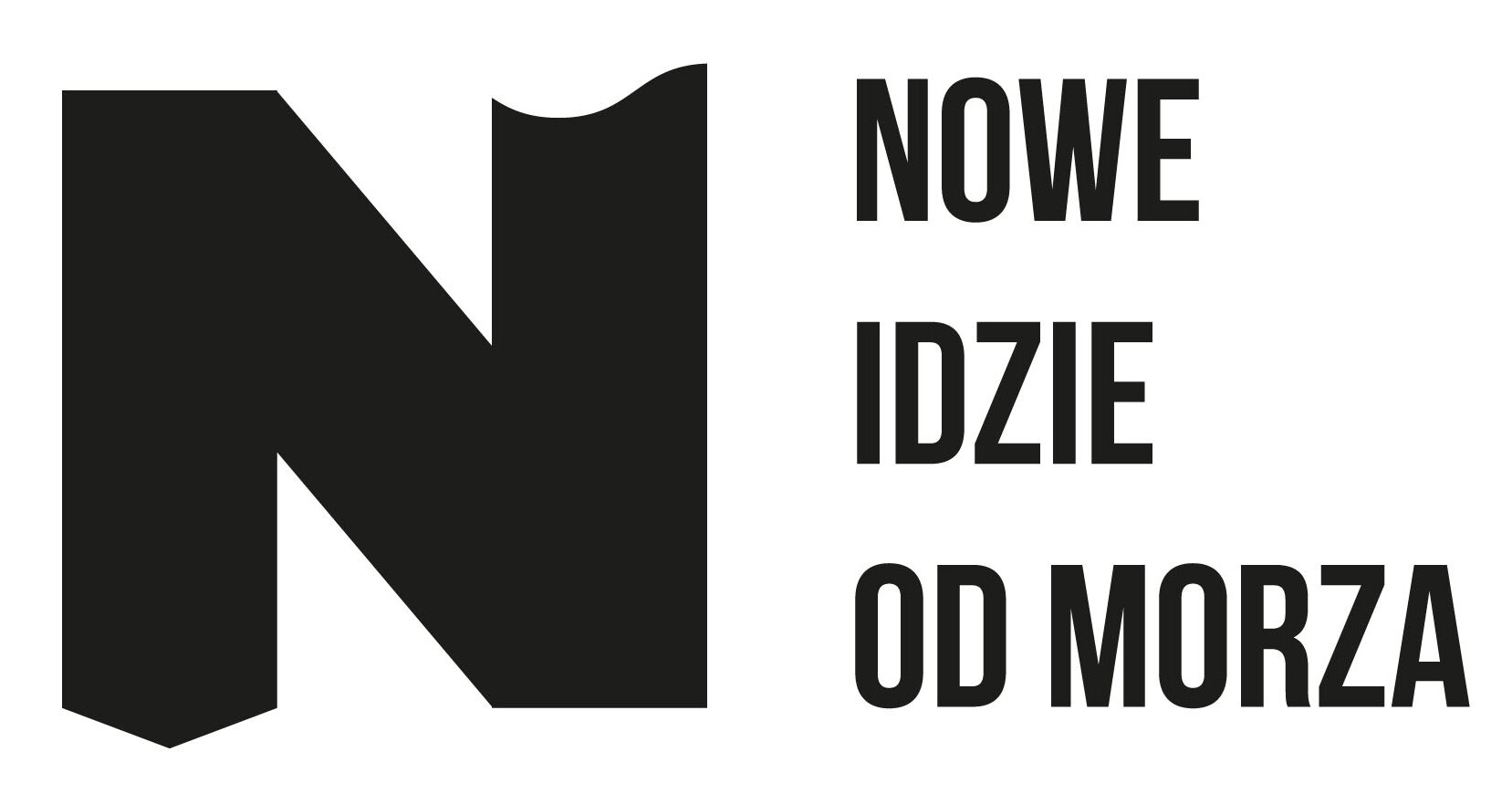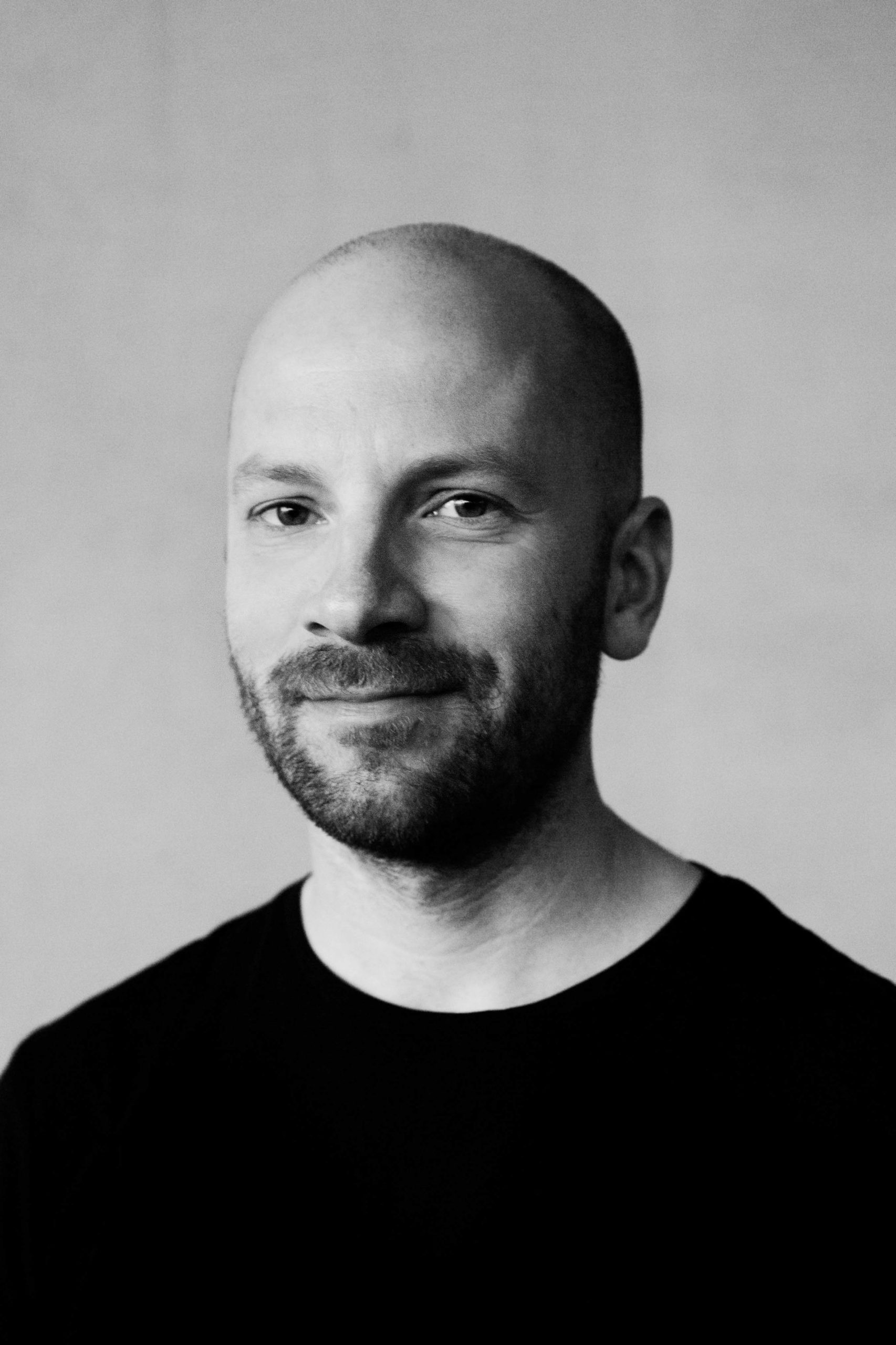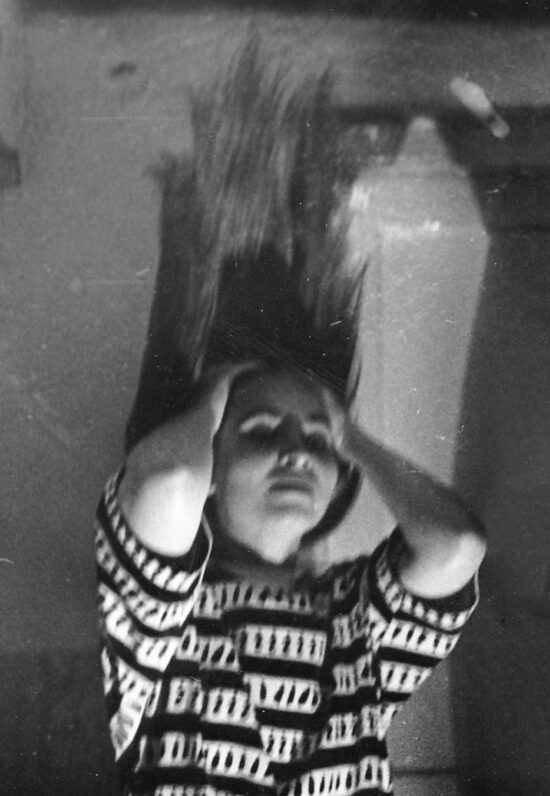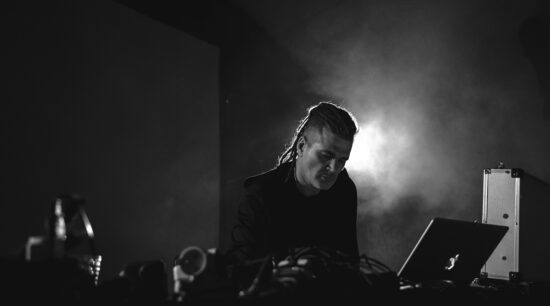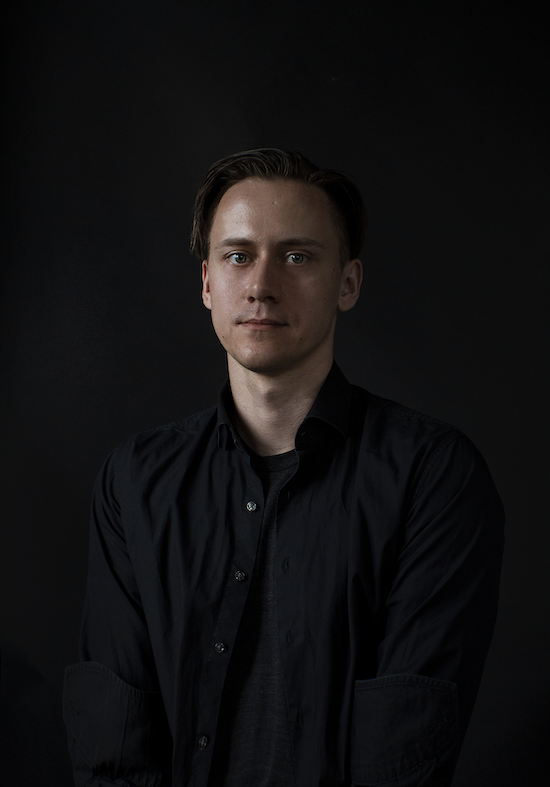– Rather than the instrument itself, what’s important is whether you find an idea for it and whether it meets your expectations concerning the music you want to play – says clarinettist and composer Wacław Zimpel.
Translation: Aleksandra Szkudłapska
“Musical chameleon”, is how The New York Times once referred to Wacław Zimpel, and while such slogans are often little more than a marketing device, hardly ever are they as fitting as in the case of the Polish clarinettist. After all, some might find it hard to grasp that he has played in ensembles as diverse as Ken Vandermark’s Resonance or the India-inspired Saagara. That he has reached for Jewish music in Ircha Clarinet Quartet and explored minimalism with LAM. Or that his solo work is informed by electronica, but these ideas are also taken further in Zimpel’s duos with Kuba Ziołek or James Holden. Yes, we’re still talking about one and the same person.
I remember the first time I saw Zimpel live – in a synagogue in Gdańsk’s Wrzeszcz district, where he played with Ken Vandermark and Mikołaj Trzaska (the material was later issued on Last Train to the First Stationunder the moniker Reed Trio). Today, this seems like a distant era, as the clarinettist’s musical path began to accelerate. But the best was still to come – despite the multitude of projects, meetings and musicians, Zimpel’s first solo album, Lines from 2016, demonstrated his yet another face, highlighting the language he had mastered and clearly stressing his fascination with minimalism. The crowning point of this episode was the prestigious Passport award from Polityka magazine. Nowadays, Zimpel is rated among the most interesting Polish – and European – musicians, alongside Paweł Szamburski and Hubert Zemler, who all turned to solo projects after years of making music, revealing their original, unique language.
Above all, though, I see (and hear!) Zimpel as a distinctive and consistent musician. Able to impart a new form to minimalism, in all its different incarnations – the improvised/jazz one with LAM, the tradition-infused one with Saagara or the electrified one when he goes it alone. Yet the collaboration with Ziołek or Holden now seems to have been but a prelude to another stage: his latest album Massive Oscillations, recorded in the Dutch Willem Twee studio on analogue synthesizers from the mid-20th century. Perhaps it was chance – a visit to a studio – that turned his forthcoming statement towards electronica, with his typical clarinet in the background, reduced to mere ornamentation. Yet from the very first sounds of the dense title track to the mantra-like “Sine Tapes”, Zimpel’s trademark elements come through, albeit in an entirely different and surprising formula. At times, the electronic layer reminds me of Middle Eastern motifs, the pulsation has a minimalist feel to it, and the final “Release” could well have been recorded with LAM. Zimpel delineates a broad perspective here: that of a composer who might rely on different tools at various stages of the way, yet keeps following his path, firmly oriented towards surprising results. This is what he told me, in a conversation about his early inspirations, acoustic music, free jazz, but also his trips to India, traditions and not becoming too attached to tried and tested methods. As a result, while Zimpel keeps adapting to musical situations and ideas, he hasn’t lost anything of himself in the process.
JAKUB KNERA: You come from a music-making family, so how did you choose the clarinet?
WACŁAW ZIMPEL: Towards the end of primary school, I listened to, and played, a lot of blues. As I delved into the development of African American music, I started to discover various forms of jazz, and eventually fell in love with the clarinet sound. I listened to a lot of recordings of Louis Armstrong’s bands, where I was most of all fascinated by the clarinettists.
The clarinet is strongly rooted in folk, not to mention Klezmer music, but on the other hand, it’s inextricably connected with jazz. Have you felt that rift?
I’ve never had a problem with that: I just knew what type of music I wanted to play. I fell in love with the clarinet and looked for its sound. I don’t think I was even fully aware of the folk character of this instrument – I got to know it through the jazz tradition and classical music. But I do love folk music. Rather than the instrument itself, what’s important is whether you find an idea for it and whether it meets your expectations concerning the music you want to play. The idea is crucial. You can play it even on a comb.
Did you find this music on your own or were you inspired by your parents?
We had a lot of vinyl records at home, a lot of Czesław Niemen, Polish Jazz and classical music, which my father listened to. But jazz was something I mostly discovered on my own when I went to high school. But I did have great support from my parents. Because of me, my dad started listening to jazz more.
When you started playing the clarinet, did you already know you’d want to continue your education at school?
This was natural to me. I attended primary music school, then I went to a regular secondary school, but I also passed entry exams to a secondary evening music school to study classical clarinet. In Poznań, where I lived at the time, there were no jazz departments at this stage of education… actually, there were no jazz departments at all. I wanted to learn to play classical music, and that classical sound began to attract me. I wanted to become a classical musician – although perhaps this was not something coming strictly from within.With hindsight, I think it was not so much my ambition as something rooted in my musical environment.
Could you specify that?
I mean the feeling one ought to study classical music in order to really master an instrument. I look at these things differently now, but I definitely don’t regret it, as this has laid the foundations for my instrumental technique.
Classical music is pumped with all sorts of rules concerning control of sound and technique – if you find your way around it, everything else is easy, especially if you’re working with improvisation.
You went on to study at the Ignacy Jan Paderewski Academy of Music in Poznań and the Hochschule für Musik und Theater in Hannover – in both cases in the classical clarinet class. The topic of Polish music education is a recurrent one in conversations with a number of musicians. Jazz faculties are also interesting, as many conservatories have only just established them. Did you feel any difference when you were studying?
Of course. A lot has changed at Polish conservatories in the meantime, but back in the day, I was shocked, for example, by the selection available at the Hannover Academy’s library – it had everything ever released in sheet notation. Apart from that, it had a vast amount of recordings and materials on various musical genres, including jazz. Back then, the Internet wasn’t what it is today, so this was really a big thing – now you can use YouTube, but I used to go to that library. In Hannover, I would practice from morning until night: classical music, improvisation, scales, chords, listening exercises – it was a testing ground. Despite studying classical clarinet, I took part in various workshops that were organized there – conducted, e.g., by Rudi Mahall or Alexander von Schlippenbach with Paul Lovens and Evan Parker. In mid-2000s, this would have been unthinkable at Polish conservatories. Nowadays, jazz students are much more aware of the existence of this improvised scene. To me, that was something unique, and I also wanted to play free jazz, this open form of improvisation – at the time, contact with these musicians was priceless.
Were you interested in improvisation before or was it the result of these workshops?
We’re talking about a conglomeration of factors here – before I went to Germany, I had already worked with Mikołaj Trzaska. At the time, it was a really important experience – contact with him helped me gain trust into what really was mine. I eased off trying to focus on different styles and turned towards my own language. Since then, I started consistently moving towards improvisation.
This was further strengthened by contacts with musicians from the Chicago scene, such as Ken Vandermark, Tim Daisy, Dave Rempis, Hamid Drake or Michael Zerang. It was a mix of all these experiences that shaped me as an improviser.
The mid-2000s were a time of considerable interest in free jazz in Poland. How did you, a conservatory musician, get to meet Trzaska and Vandermark?
A friend of mine, Julia Szubert, organized a concert in the courtyard of the Poznań ballet school, guest starring Mikołaj Trzaska, who played with various Poznań-based ensembles. One of them was Emergency – a group I formed with the Wójciński brothers, Robert Rasz and Paweł Postaremczak. At that moment, free jazz started gaining importance for people in Poland and entered a number of clubs. Another crucial moment was when I met Wawrzyniec Mąkinia from the Multikulti label – he was the one who introduced me to all the aforementioned musicians – or when I met Marek Winiarski from Not To, who was responsible for the Kraków Jazz Autumn.
You played with Vandermark in Resonance, and you also played with Trzaska in Ircha Clarinet Quartet, where Jewish music makes an appearance. Have you been in touch with it before?
It started with Ircha, but also with projects we did with Raphael Rogiński – I started discovering various niguns and old Jewish pieces because of them. I also started dabbling in the music of Jews from Yemen – Raphael brought a number of their records from Israel, and I transcribed them. We played a concert with Raphel, Michael Zerang and Perry Robinson – brilliant clarinettist, who’s sadly deceased now – and then released this material on MultiKulti.
You played in many bands, but you also started to initiate your own ones: such as Undivided, Hera, and then LAM or To Tu Orchestra. Was it the time when visions for your personal projects started taking shape?
Hera formed in the late 2008, shortly after I moved to Warsaw. Before that we had a collective called The Light with Wojtek Traczyk and Robert Rasz. For a while, these groups lived parallel lives. In Undivided, I played with Klaus Kugel, Marek Torak and Bobby Few. The contact with Ken Vandermark really gave me a lot, particularly in terms of leading an ensemble and composition. Observing Ken at work really opened me up and pushed me towards my own explorations. Collaborations with various musicians are nothing out of the ordinary in the world of free jazz – you might be touring with one band that does free improvisations, and based on that, you start getting ideas about what to do with your own band. And the other way round.
This solo activity is crucial, as the release of Lines in 2016 marked a new chapter in your career. The same happened with Hubert Zemler’s solo album, Gostak & Doshes, or Paweł Szamburski’s Ceratitis Capitata. All three of you played a lot before, but it marked an important moment – for you too. A game changer, as Szamburski called it.
It really was a game changer, a turn towards entirely different aesthetics. This album resulted from my fascinations with American minimalists, Terry Riley in particular. Since then, I began to introduce more and more electronic instruments – both in the studio and at live shows. Lines and LAM’s album coincided and were similar in a number of aspects. Later on, I followed this path on Saagara’s second album or in the duo with Kuba Ziołek. In fact, many things I’m doing now are a consequence of that step. I feel that we’re talking about two stages here, with Lines being the turning point.
Yet what really makes you stand out is the fascination with minimalism. What draws you to it?
The curvature of time.
If you observe something for a long enough time, if you listen to a single structure, motif or sound, something changes in the perception. It transports you to another state – and this state is what I’m looking for in music.
Studying classical music, the turn towards free jazz, and then minimalism and electronica. Did you at some point come to the conclusion that the clarinet was not enough?
First of all, I wanted to find a different means of expression, and I was longing for new sounds – which I found through electronica. I wanted to broaden the colour palette. I was interested in placing the clarinet sound in a different context.
At one point, you started using a robot to help you play the piano during live shows. To me, that seemed entirely out of character. It’s a very futuristic thing.
This was before I introduced electronics to my music. I wanted to have a device to loop my piano, because it seemed silly to engage a pianist to press a single key all the time. Yet my robot, which I call Hammerklavier or Sztuczne Palce (i.e. Artificial Fingers), does something a human being cannot do. It is able to create 6 entirely independent time loops. There’s a certain Doctor Mariusz in Warsaw – a handyman able to repair and create absolutely everything – who built a device based on my idea, and in the process, it turned out that this device has a futuristic, steam-punk character. On the one hand, it was mechanical and analogue, on the other, it was weird, as if from a different dimension. There’s something theatrical about it.
And what about India, where you keep returning since 2012? Where did that fascination come from?
I’ve been interested in the music of many cultures for quite some time. Classical Indian music still represents a large portion of my musical interests – almost everything I know about rhythm comes from India. I used to play rhythmical music, but in the jazz convention. Collaborating with musicians from India introduced me to complex rhythm structure I keep working with. These fascinations could already be heard in Hera. I went to India to see what it looked like from the inside – I keep learning this music, trying to get to the bottom of it.
Indian ragas are a much more complex system than Western music.
I don’t think there exists a single person who would know them all, although there are many musicians who can play a great deal of them. In Western music, you may have 14 or 16 scales in common use, while Indian music has several thousand ragas. Indian music is different from European music in that it does not employ harmony, which in European music is used to build tension alongside melody. There, tension results from the relationship between the melody and the drone, which is played on the tanpura. This is where the multitude of ragas comes from – their varied nature gives rise to rich possibilities of expression.
At one point, though, I mostly focused on rhythm – this is what I’m most keen to transplant into my music from India. In order to enter deep into the ragas, I’d have to change the way I play the clarinet, change the mouthpiece, the reed, because this music is rich on glissandos, on ornamentation that – in Western understanding – takes place between the sounds. I don’t try to pretend I’m an Indian musician, but I want to be inspired by what this music gives me and transform it into my own language.
You regularly bring back traditional instruments – not just from India, but from other journeys too. Do you have a collector’s streak or is that because you want to play them, like the khaen? What instruments have you already got in your collection?
I find instruments fascinating, because you can use them to make sounds – so each instrument I own has been used to some extent, or is still in use. I have a number of flutes and other brass instruments from various corners of the world, a number of percussion instruments from India, the khaen you mentioned and a growing collection of electronic instruments. I also have a number of conventional instruments, such as the violin, the piano, the guitar, and of course various clarinets.
Traditional music, drones combined with minimalism, rhythm interlaced with folk… We’ve got a lot of threads here, and your latest album signifies another important turn. It was produced by James Holden, with whom you play in The Animal Spirits, but you also played together at Unsound. He evolved from dance music towards modular synthesizers and improvisation, while you reached that place from the direction of classical music and jazz. Was it this collaboration that pushed you towards this sound?
Indeed, we seem to have met halfway. I got there from acoustic jazz, and James from dance music. For both of us, trance represents a fundamental part of music. I think that’s why we understand each other so well. We met in 2018 at Rewire festival, where I played with Kuba Ziołek, and he with The Animal Spirits, to which he later invited me. We played a number of shows and some rehearsals in London – at one point, we used a free moment to record two tracks, and then a further two in a trio with Kuba Ziołek. All of them will be released later on this year by his label Border Community on an EP.
I have to use this opportunity to ask about your collaboration with Sam Shackleton, with whom you were supposed to play at Unsound, but the plan ultimately fell through. Will we get to hear the two of you together again at some point?
We made an album together which will probably be released at some point this year.
Looking at these projects, what’s happening on Massive Oscillations should come as no surprise. The clarinet is in the background here, as you’ve mostly been working with electronic instruments from the 1950s, 60s and 70s, such as the legendary ARP 2500, tape recorders or cult oscillators and filters by Rohde & Schwarz. And it all happened in Willem Twee studio in Den Bosch, the Netherlands. Did this place serve as an inspiration?
I had an idea in my mind, but when I arrived at the studio, I completely changed the whole concept. I decided to approach the music-making process intuitively and trust the machines, think about what they’ve got to offer.I followed the sound that began to emerge there. I created all these forms using unique synthesizers from the mid-20th century, and treated the clarinet as just another element of the puzzle. I was more focused on achieving an interesting sound on the album, not on recording a clarinet player’s album. It just happened that, for the first time, instead of being the driving force behind the narrative, the clarinet rather offered a commentary to what was happening in the electronic layer.
We started out by mentioning groups, such as Hera and LAM, which you’ve referred to as working bands. Is that a concept you find important? Is that even a legitimate concept on the improvised scene? I’m not equating you with the group here, but mostly it’s just because of your language. I see Wacław ZImpel first, and then the groups you play with.
I don’t have such a working band at the moment – it’s really hard to keep, to work with it regularly and go on tour. Hera used to be such a band. LAM has recently come close to being one, but because of all my other projects, it also got hibernated. Saagara is something of the kind, but with large breaks – because the rest of the band live in India, we meet one every 18 months to do a tour. At the moment, I spend most time doing my solo work and collaborating with various electronic musicians.
Do you have a feel that electronica may dominate your music?
I don’t have full control over the creative process. The ideas come from somewhere and make their own way.People who’ve been listening to my music for years may find it a bit strange – on the other hand, you get a free jazz album, and on the other, Massive Oscillations. But that’s how I work: I try not to limit myself to the tools I had worked out beforehand.
I want each subsequent endeavour to lead me to new realms. So I don’t know whether electronica has dominated my music. Time will tell. For now, there really is quite a lot of it.
Is playing the clarinet easier or more difficult in certain situations? Or maybe the equipment in the studio has shown you something new?
There’s no pattern for that. With each endeavour, I’m inspired by different things. When I approach composition, I try to keep a clear head, with absolutely nothing inside – the vital thing is to notice the moment an idea appears, and follow it. Whether I play the clarinet, the piano or the synth.
